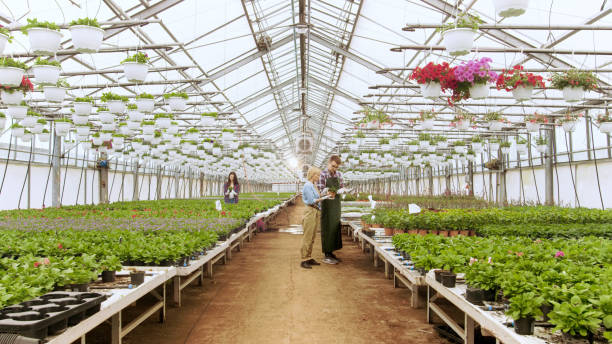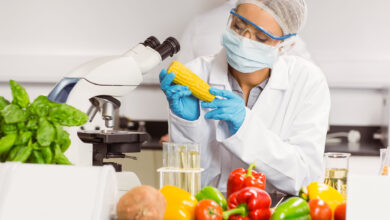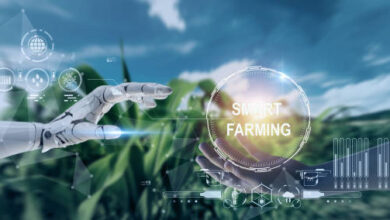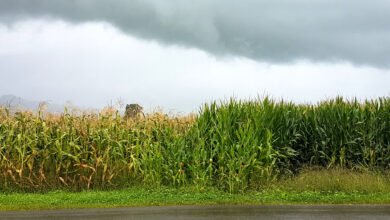Agriculture Economy: How Policy Decisions Affect Farmers and Consumers
agriculture economy

The Agriculture Economy is an integral part of any country’s economy. It is the backbone of food production, providing farmers with income and consumers with an accessible and affordable source of food. Policies and decisions made by governments have a direct effect on the Agriculture Economy, impacting both farmers and consumers. This blog post will explore how policy decisions affect the Agriculture Economy, and the implications for farmers and consumers alike.
Understanding the Importance of Agriculture in the Economy
The importance of agriculture in the economy cannot be overstated. It plays a vital role in ensuring food security, generating employment, and driving economic growth. Agriculture is not just about farming; it encompasses the entire process of producing, processing, and distributing food products.
First and foremost, agriculture is essential for food production. Without a strong agricultural sector, a country would be heavily reliant on food imports, which can be costly and unstable. By producing food domestically, a country can ensure a steady supply of affordable and nutritious food for its population.
Additionally, agriculture provides employment opportunities, especially in rural areas where farming is the main livelihood. Farmers, farm laborers, and workers in the food processing industry all contribute to the agricultural economy. Their incomes, in turn, stimulate local businesses and contribute to the overall prosperity of the region.
Furthermore, agriculture drives economic growth through its linkages with other sectors. The agricultural sector creates demand for inputs such as fertilizers, machinery, and seeds, which supports manufacturing industries. Additionally, the transportation and logistics required for the distribution of agricultural products generate employment and business opportunities.

Historical Perspectives on Agricultural Policies
Agricultural policies have played a crucial role throughout history in shaping the Agriculture Economy. From ancient civilizations to modern times, governments have implemented various policies to promote agricultural development, ensure food security, and support farmers.
One of the earliest examples of agricultural policies can be found in ancient civilizations such as Mesopotamia and Egypt. These societies recognized the importance of agriculture and implemented measures to regulate irrigation systems, allocate land for farming, and provide incentives for agricultural productivity.
In more recent history, the Industrial Revolution brought significant changes to agriculture. New technologies, such as mechanized farming equipment and improved seed varieties, revolutionized agricultural production. Governments responded by implementing policies that supported mechanization and encouraged farmers to adopt new farming practices.
During the 20th century, many countries introduced policies aimed at modernizing and increasing agricultural productivity. For example, the Green Revolution in the 1960s and 1970s saw the introduction of high-yielding crop varieties, along with the use of chemical fertilizers and pesticides. These policies aimed to address food shortages and increase crop yields.
However, it is important to recognize that agricultural policies have not always been successful. Some policies, such as price controls and subsidies, have had unintended consequences. They can distort market forces, create inefficiencies, and lead to overproduction or low-quality food.
Impact of Policy Decisions on Farmers’ Income
Farmers’ income is heavily influenced by policy decisions made by governments. These policies can have both positive and negative effects on the financial well-being of farmers. One major way in which policy decisions impact farmers’ income is through subsidies and price supports. Government subsidies can provide financial assistance to farmers, helping to offset the costs of production and ensure a stable income. Price supports, on the other hand, establish minimum prices for agricultural products, protecting farmers from fluctuations in market prices.
However, policy decisions can also have negative consequences for farmers’ income. For example, trade policies can affect farmers’ access to international markets and influence the prices they receive for their products. Import restrictions can limit competition, but they can also reduce market opportunities for farmers. In some cases, farmers may also face barriers to entry or high regulatory burdens, making it difficult for them to earn a sufficient income.
In addition to direct policy decisions, external factors such as climate change and natural disasters can also impact farmers’ income. Extreme weather events can damage crops and livestock, leading to financial losses for farmers. Adequate policies and support systems are needed to help farmers mitigate the risks associated with these challenges and recover from such losses.

Price Fluctuations and Food Security
Price fluctuations in the agricultural sector can have a significant impact on food security. When the prices of agricultural products fluctuate rapidly or become excessively high, it can create challenges for both farmers and consumers.
For farmers, price fluctuations can disrupt their planning and financial stability. If prices drop unexpectedly, farmers may struggle to cover their production costs and make a profit. This can lead to a decrease in investment in agricultural activities and a potential decline in food production. On the other hand, if prices increase significantly, farmers may benefit in the short term, but this can also lead to higher production costs and input prices, making it more difficult for consumers to afford food.
For consumers, price fluctuations can directly impact their access to affordable and nutritious food. If prices rise, especially for staple foods, it can become more difficult for individuals and families to afford an adequate diet. This can lead to food insecurity, malnutrition, and even hunger, particularly for vulnerable populations.
To address the challenges posed by price fluctuations, governments can implement policies that aim to stabilize prices and ensure food security. These may include measures such as price controls, subsidies, and strategic reserves. Price controls can help to prevent excessive price increases and protect consumers, while subsidies can support farmers during periods of low prices. Strategic reserves can be used to stabilize markets and ensure a steady supply of essential food items.
The Role of Agricultural Exports in the National Economy
Agricultural exports play a crucial role in the national economy, contributing to economic growth, employment, and foreign exchange earnings. When a country has a thriving agricultural sector, it can export its surplus produce to other countries, generating revenue and stimulating economic development.
Agricultural exports have several benefits for the national economy. Firstly, they contribute to foreign exchange earnings. When a country exports agricultural products, it earns valuable foreign currency, which can be used to finance imports, repay debts, or invest in other sectors. This is especially important for countries that rely heavily on agriculture as their primary source of income.
Secondly, agricultural exports create employment opportunities. As the agricultural sector expands to meet export demands, it generates jobs throughout the value chain. Farmers, laborers, processors, and exporters all benefit from the increased demand for agricultural products. This, in turn, stimulates local economies and contributes to poverty reduction.
Furthermore, agricultural exports can diversify the economy and reduce dependency on a single sector. By expanding into international markets, countries can tap into new opportunities and reduce the risks associated with relying solely on domestic demand. This promotes economic resilience and stability, making the country less vulnerable to external shocks.
In summary, agricultural exports are an integral part of the national economy. They contribute to economic growth, provide employment opportunities, and enhance a country’s competitiveness in the global marketplace. Governments should prioritize policies and investments that support the development of the agricultural export sector, ensuring its continued growth and success.
Innovative Technologies for Agricultural Growth
In today’s rapidly evolving world, innovation and technology are changing the way we approach agriculture. Innovative technologies have the potential to revolutionize the agriculture industry and contribute to its growth. From precision farming to vertical farming, there are numerous technologies that are transforming the way we produce food.
One such technology is precision farming, which utilizes GPS, sensors, and other advanced technologies to optimize the use of resources in farming. By collecting real-time data on soil moisture, nutrient levels, and weather conditions, precision farming enables farmers to make informed decisions about when and where to plant, fertilize, and irrigate. This not only improves efficiency but also reduces costs and minimizes environmental impact.
Another innovative technology is vertical farming, which involves growing crops in vertically stacked layers using hydroponics or aeroponics. Vertical farming allows for year-round production in urban areas, where space is limited. It also reduces the need for pesticides and herbicides and conserves water, making it a sustainable and efficient method of food production.
Additionally, the use of drones in agriculture is gaining popularity. Drones equipped with cameras and sensors can collect valuable data about crop health, soil conditions, and irrigation needs. This data can help farmers identify areas that require attention and make informed decisions about crop management.
Environmental Sustainability in Agriculture
In the face of growing concerns about climate change and environmental degradation, environmental sustainability has become a critical focus in agriculture. The agriculture sector is highly dependent on natural resources such as water, soil, and biodiversity, making it essential to prioritize sustainable practices that protect and preserve these resources for future generations.
Environmental sustainability in agriculture involves minimizing the negative impact of agricultural activities on the environment while maximizing productivity and efficiency. One key aspect of this is the adoption of sustainable farming practices, such as organic farming, agroforestry, and integrated pest management. These practices aim to reduce the use of synthetic fertilizers and pesticides, conserve water, promote soil health, and protect biodiversity.
Another important aspect of environmental sustainability in agriculture is the conservation of natural resources. This includes proper management of water resources through measures such as irrigation efficiency and water conservation techniques. Soil conservation practices, such as crop rotation and cover cropping, help prevent erosion and maintain soil fertility. Additionally, the protection of biodiversity through the preservation of natural habitats and the promotion of biodiversity-friendly farming practices is crucial for the long-term sustainability of agriculture.
Innovative technologies also play a significant role in achieving environmental sustainability in agriculture. For example, precision agriculture allows farmers to precisely target inputs such as fertilizers and pesticides, reducing waste and minimizing environmental pollution. Advanced irrigation systems can optimize water usage, reducing water waste and improving efficiency. Furthermore, the use of renewable energy sources such as solar power in agricultural operations can reduce greenhouse gas emissions and dependence on fossil fuels.

Future Directions for Agricultural Policy-making
As we look towards the future of agriculture, it is crucial to consider the evolving landscape and make informed decisions on agricultural policy-making. The challenges and opportunities facing the agriculture economy are constantly changing, requiring policymakers to adapt and innovate.
One important area for future policy-making is promoting sustainable agriculture practices. With growing concerns about climate change and environmental degradation, it is crucial to prioritize practices that protect the environment while ensuring productivity and efficiency. This includes promoting organic farming, agroforestry, and integrated pest management, as well as investing in research and development for innovative technologies that reduce environmental impact.
Another important direction for agricultural policy-making is addressing the needs of small-scale farmers. Small-scale farmers often face unique challenges and require support to compete in the global market. Policy measures such as providing access to credit, improving market access, and promoting farmer cooperatives can help level the playing field and enhance the economic well-being of small-scale farmers.
Additionally, future agricultural policy-making should focus on promoting agricultural innovation and digitalization. Investing in research and development for cutting-edge technologies such as precision farming, robotics, and artificial intelligence can enhance productivity, reduce resource waste, and mitigate environmental impact. Moreover, creating an enabling environment for digitalization, such as improving rural connectivity and access to digital tools, can empower farmers with valuable information and market opportunities.
Finally, future agricultural policy-making should prioritize collaboration and partnership between governments, farmers, researchers, and consumers. By engaging all stakeholders, we can ensure that policies are informed by real-world experiences and address the diverse needs of the agriculture sector. Building strong partnerships can also facilitate knowledge sharing, capacity building, and technology transfer, fostering a more sustainable and resilient agriculture economy.
In conclusion, the future of agricultural policy-making requires a holistic and forward-thinking approach. By prioritizing sustainability, supporting small-scale farmers, fostering innovation, and promoting collaboration, we can shape a future agriculture economy that is both economically prosperous and environmentally sustainable.







Good article and right to the point. I am not sure if this is truly the best place to ask but do you guys have any thoughts on where to hire some professional writers? Thanks in advance 🙂
Woh I love your blog posts, bookmarked! .
Admiring the time and energy you put into your website and in depth information you provide. It’s nice to come across a blog every once in a while that isn’t the same old rehashed material. Wonderful read! I’ve saved your site and I’m adding your RSS feeds to my Google account.
Hi my loved one! I want to say that this post is amazing, great written and come with almost all vital infos. I would like to look more posts like this.
It’s actually a great and useful piece of info. I am glad that you shared this useful information with us. Please keep us informed like this. Thanks for sharing.
A person necessarily lend a hand to make severely articles I would state. That is the first time I frequented your web page and up to now? I amazed with the research you made to create this actual post extraordinary. Excellent process!
You have brought up a very excellent details, appreciate it for the post.
I have read several good stuff here. Certainly worth bookmarking for revisiting. I surprise how a lot effort you put to create this sort of great informative web site.
I enjoy the efforts you have put in this, appreciate it for all the great content.
I have been checking out a few of your stories and i can state nice stuff. I will definitely bookmark your site.
What is ProvaDent? In the dynamic landscape of dental care, innovation is key to improving patient experience and outcomes
Hi! Someone in my Facebook group shared this site with us so I came to look it over. I’m definitely enjoying the information. I’m book-marking and will be tweeting this to my followers! Wonderful blog and outstanding design and style.
I know this if off topic but I’m looking into starting my own weblog and was wondering what all is required to get setup? I’m assuming having a blog like yours would cost a pretty penny? I’m not very internet savvy so I’m not 100 certain. Any tips or advice would be greatly appreciated. Kudos